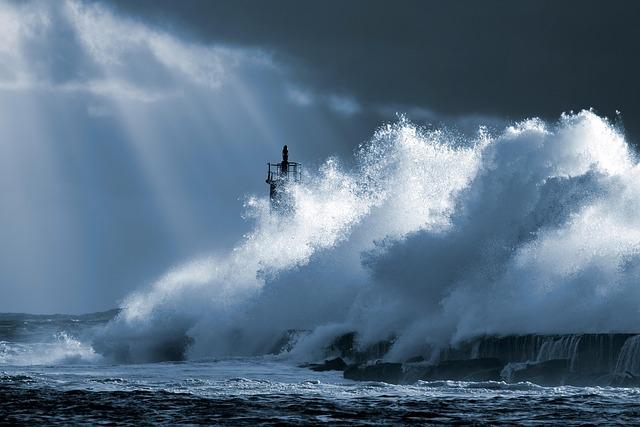Devastating Storm Ravages Northeast: Flooding and Wind Damage Disrupt Urban Life
A fierce storm recently battered the Northeastern United States, unleashing relentless rainfall and intense winds that inundated New York City and felled numerous trees throughout Philadelphia. This extreme weather event severely impacted daily routines, inflicted extensive property damage, and triggered emergency operations as communities confronted rising floodwaters and perilous conditions. According to AccuWeather, the storm highlights the region’s susceptibility to severe weather phenomena, emphasizing the critical need for improved urban preparedness and resilience strategies.
New York City Flooding: Transportation Paralysis and Safety Concerns
The torrential rains brought on by the storm have submerged multiple neighborhoods in New York City, causing widespread transit disruptions and necessitating mass evacuations. Key subway routes in Manhattan and Brooklyn remain underwater, leaving thousands of commuters stranded and complicating emergency response efforts. Road closures across the city have further hindered mobility, while power outages have plunged significant portions of Queens and the Bronx into darkness. Utility crews are working tirelessly to restore electricity amid ongoing downpours.
Structural weaknesses in both residential and commercial buildings have been exacerbated by the flooding, creating hazardous environments. Authorities have issued urgent advisories urging residents to steer clear of flood-affected zones and to be cautious of contamination risks from overwhelmed sewage systems. Critical impacts include:
- Flooded streets and compromised bridges disrupting daily commutes and emergency access
- Obstructive fallen trees and debris impeding rescue and repair operations
- Heightened risk of waterborne diseases prompting public health alerts
- Establishment of temporary shelters to accommodate displaced residents
| Incident | Location | Current Status |
|---|---|---|
| Subway Flooding | Manhattan & Brooklyn | Closed |
| Power Outages | Queens & Bronx | Partial Restoration Underway |
| Fallen Trees | Philadelphia Suburbs | Cleanup in Progress |
| Road Closures | Staten Island | Active |
Philadelphia Faces Extensive Wind Damage and Power Interruptions
Residents of Philadelphia awoke to widespread destruction as fierce winds uprooted countless trees, blocking streets and plunging neighborhoods into darkness. Emergency teams have been deployed citywide to remove debris and restore access to critical routes. Numerous homes and commercial properties suffered damage from falling branches and uprooted trees, complicating recovery efforts amid persistent rainfall. The storm’s sudden ferocity caught many off guard, causing significant disruption to everyday life.
Power outages have left tens of thousands without electricity, with utility companies working nonstop to repair damaged infrastructure. Major thoroughfares and residential areas remain without power, affecting transportation, communication, and essential services. Authorities advise residents to remain indoors and avoid contact with downed power lines, highlighting ongoing risks from unstable trees and floodwaters. The table below details outage figures and restoration priorities:
| Neighborhood | Customers Without Power | Restoration Priority |
|---|---|---|
| North Philadelphia | 12,000 | High |
| Southwest Philadelphia | 8,500 | Medium |
| Center City | 5,200 | High |
| Northeast Philadelphia | 7,700 | Low |
- City crews are focusing on clearing main roads and emergency corridors first.
- Utility teams are repairing transformers and downed lines around the clock.
- Public safety announcements emphasize caution near damaged areas, especially after dark.
Coordinated Emergency Operations and Evacuation Measures in Storm-Affected Zones
In response to the extensive damage, local authorities have rapidly deployed emergency personnel, including firefighters, utility workers, and rescue teams, to manage debris removal and restore critical services. Temporary shelters have been set up throughout impacted neighborhoods, offering displaced individuals access to food, water, and medical care. Additionally, a 24-hour hotline has been established to provide residents with timely updates and assistance.
Evacuation protocols were swiftly enacted in the most flood-prone and vulnerable areas, particularly along riverbanks and low-lying districts. Residents are strongly encouraged to comply with official evacuation orders to ensure their safety. Key elements of the ongoing emergency response include:
- Mandatory evacuations in high-risk neighborhoods.
- Transportation support for elderly and mobility-impaired individuals.
- Collaboration with healthcare facilities to prepare for potential increases in emergency cases.
| District | Evacuation Directive | Shelter Sites |
|---|---|---|
| Lower Manhattan | Mandatory | Community Center A, High School Gymnasium |
| Kensington | Advisory | Church Hall B |
| South Philadelphia | Mandatory | Library Annex, Recreation Center |
Essential Preparedness Guidelines for Residents Facing Severe Weather and Flooding
Remain vigilant and prepare early. It is vital for residents to continuously monitor reliable weather updates and local emergency alerts to stay informed about storm developments. Assembling an emergency kit stocked with essentials such as bottled water, non-perishable foods, flashlights, batteries, and important documents is highly recommended. Keeping mobile devices fully charged and having portable power banks on hand can ensure communication remains uninterrupted during outages. Securing outdoor items and furniture can help minimize damage caused by strong winds.
Plan evacuation routes and implement flood defenses. Familiarize yourself with your community’s designated evacuation paths and shelter locations well in advance to avoid confusion during emergencies. To reduce flood damage, consider installing sump pumps and placing sandbags at vulnerable entry points. Never attempt to drive or walk through flooded areas, as hidden hazards and swift currents pose serious risks. The table below summarizes key preparedness actions for quick reference:
| Preparedness Action | Objective | Recommended Supplies |
|---|---|---|
| Assemble Emergency Kit | Ensure survival essentials | Water, food, medications, flashlight |
| Develop Communication Plan | Maintain connectivity | Charged phones, portable chargers |
| Secure Property | Reduce damage risk | Sandbags, tarps, secure outdoor items |
| Map Evacuation Routes | Facilitate safe relocation | Route maps, transportation options |
Looking Ahead: Strengthening Urban Resilience Amid Increasing Storm Threats
As recovery operations progress throughout the affected areas, officials continue to urge residents to stay alert and adhere to safety guidelines while floodwaters recede and storm damage is addressed. This recent catastrophic storm serves as a stark reminder of the pressing need to bolster infrastructure resilience and enhance emergency preparedness in urban environments facing more frequent and severe weather events. AccuWeather remains committed to delivering timely updates as communities strive to rebuild and restore normalcy following this devastating natural disaster.








